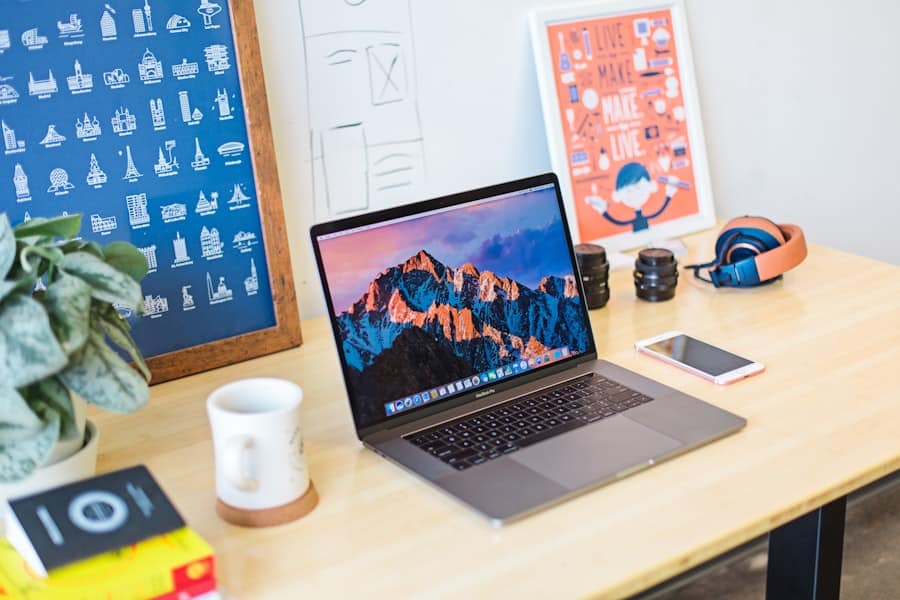The advent of technology has revolutionized the educational landscape, giving rise to virtual classrooms that transcend geographical boundaries and traditional learning environments. Virtual classrooms leverage digital platforms to facilitate learning, allowing students to engage with educational content from the comfort of their homes or any location with internet access. This shift has not only made education more accessible but has also introduced innovative teaching methodologies that cater to diverse learning needs.
In these digital spaces, educators can utilize a variety of tools and resources to create dynamic learning experiences that foster engagement and comprehension. As the world continues to embrace online education, the concept of personalized learning has gained significant traction. Personalized learning refers to tailoring educational experiences to meet the unique needs, preferences, and interests of individual students.
In virtual classrooms, this approach is particularly effective, as it allows educators to harness technology to create customized lesson plans that resonate with each learner. By focusing on the individual rather than a one-size-fits-all model, educators can enhance student motivation, improve retention rates, and ultimately lead to better academic outcomes.
Key Takeaways
- Virtual classrooms offer a flexible and convenient way for students to access education from anywhere.
- Personalized lesson plans can cater to individual student needs and learning styles, leading to better engagement and understanding.
- Tailoring lessons to individual learning styles can help students grasp concepts more effectively and retain information better.
- Utilizing technology for customized learning allows for interactive and adaptive learning experiences tailored to each student.
- Adapting curriculum to student’s pace and progress ensures that students are not left behind or held back, promoting a more effective learning experience.
Benefits of Personalized Lesson Plans
Addressing Diverse Learning Needs
In a traditional classroom setting, teachers often struggle to accommodate varying levels of understanding and different learning styles within a single lesson. However, in a virtual classroom, educators can design lesson plans that cater specifically to each student’s strengths and weaknesses.
Fostering Engagement and Ownership
This individualized approach not only helps students grasp complex concepts more effectively but also fosters a sense of ownership over their learning journey. Moreover, personalized lesson plans can lead to increased student engagement.
Connecting Academic Content to Personal Interests
When lessons are tailored to align with a student’s interests and learning preferences, they are more likely to be motivated and invested in their education. For instance, a student who is passionate about environmental science may benefit from a lesson plan that incorporates real-world applications related to sustainability. By connecting academic content to students’ personal interests, educators can create a more stimulating and relevant learning environment that encourages active participation and critical thinking.
Tailoring Lessons to Individual Learning Styles
Understanding that each student has a unique learning style is crucial for effective teaching in virtual classrooms. Learning styles can generally be categorized into visual, auditory, reading/writing, and kinesthetic modalities. By recognizing these differences, educators can tailor their lesson plans to accommodate various preferences.
For example, visual learners may benefit from infographics, videos, and interactive presentations that illustrate key concepts visually. In contrast, auditory learners might thrive in environments where discussions, podcasts, or recorded lectures are prevalent. Incorporating diverse instructional strategies into lesson plans not only enhances comprehension but also promotes inclusivity within the virtual classroom.
For instance, a teacher might design a unit on historical events that includes video documentaries for visual learners, podcasts for auditory learners, and written articles for those who prefer reading.
By providing multiple avenues for learning, educators can ensure that all students have the opportunity to succeed.
Utilizing Technology for Customized Learning
Technology plays a pivotal role in facilitating personalized learning experiences in virtual classrooms. With an array of digital tools at their disposal, educators can create interactive and engaging lesson plans that cater to individual student needs. Learning management systems (LMS) such as Google Classroom or Canvas enable teachers to distribute customized assignments and resources tailored to each student’s progress and understanding.
These platforms also allow for real-time feedback and assessment, enabling educators to adjust their teaching strategies based on student performance. Furthermore, adaptive learning technologies have emerged as powerful allies in personalized education. These systems use algorithms to analyze student data and adjust content delivery accordingly.
For instance, platforms like DreamBox Learning or IXL provide personalized math instruction by adapting the difficulty level of problems based on a student’s responses. This ensures that learners are consistently challenged without becoming overwhelmed, fostering a growth mindset and encouraging perseverance in the face of difficulties.
Adapting Curriculum to Student’s Pace and Progress
One of the most significant advantages of personalized lesson plans in virtual classrooms is the ability to adapt the curriculum according to each student’s pace and progress. Traditional classroom settings often impose rigid timelines for completing assignments and mastering concepts, which can lead to frustration for both fast and slow learners.
For example, if a student excels in mathematics but struggles with reading comprehension, an educator can provide additional resources and support tailored specifically to improve reading skills while allowing the student to advance in math at an accelerated pace. This flexibility not only helps students build confidence in their abilities but also fosters a deeper understanding of the subject matter as they take the time needed to master each concept thoroughly.
Incorporating Student Interests and Passions into Lesson Plans
Personalized Learning Experiences
For instance, a student who loves video games might be encouraged to create a project that explores game design principles while simultaneously learning about programming or storytelling techniques.
Connecting Hobbies to Academic Exploration
Educators can also leverage students’ hobbies or extracurricular activities as springboards for academic exploration. A student involved in sports could be tasked with researching the physics behind athletic performance or analyzing statistics related to their favorite team.
Developing Critical Thinking Skills
By connecting academic content with students’ passions, educators not only make learning more enjoyable but also help students develop critical thinking skills as they apply their knowledge in real-world contexts.
Overcoming Challenges in Implementing Personalized Lesson Plans
While the benefits of personalized lesson plans in virtual classrooms are clear, implementing this approach is not without its challenges. One significant hurdle is the potential for increased workload on educators. Designing individualized lesson plans requires considerable time and effort, particularly when considering the diverse needs of each student.
Educators may find themselves overwhelmed by the demands of creating tailored content while also managing administrative tasks and maintaining communication with students. Additionally, there may be technological barriers that hinder effective implementation. Not all students have equal access to devices or reliable internet connections, which can create disparities in learning opportunities.
Educators must be mindful of these challenges and strive to create inclusive environments where all students can thrive. This may involve providing alternative resources or offline activities for those who face technological limitations.
The Future of Personalized Learning in Virtual Classrooms
The future of personalized learning in virtual classrooms holds immense potential for transforming education as we know it. As technology continues to evolve, so too will the tools available for educators seeking to create customized learning experiences. The integration of artificial intelligence and machine learning into educational platforms promises even greater levels of personalization by analyzing student data more effectively and providing tailored recommendations for improvement.
Moreover, as educational institutions increasingly recognize the importance of individualized instruction, there is likely to be a growing emphasis on training teachers in personalized teaching methodologies. Professional development programs focused on best practices for creating personalized lesson plans will empower educators to embrace this approach confidently. Ultimately, the shift towards personalized learning in virtual classrooms represents a significant step forward in fostering an inclusive and engaging educational environment that meets the diverse needs of all learners.
If you are interested in incorporating technology into education, you may also want to check out




